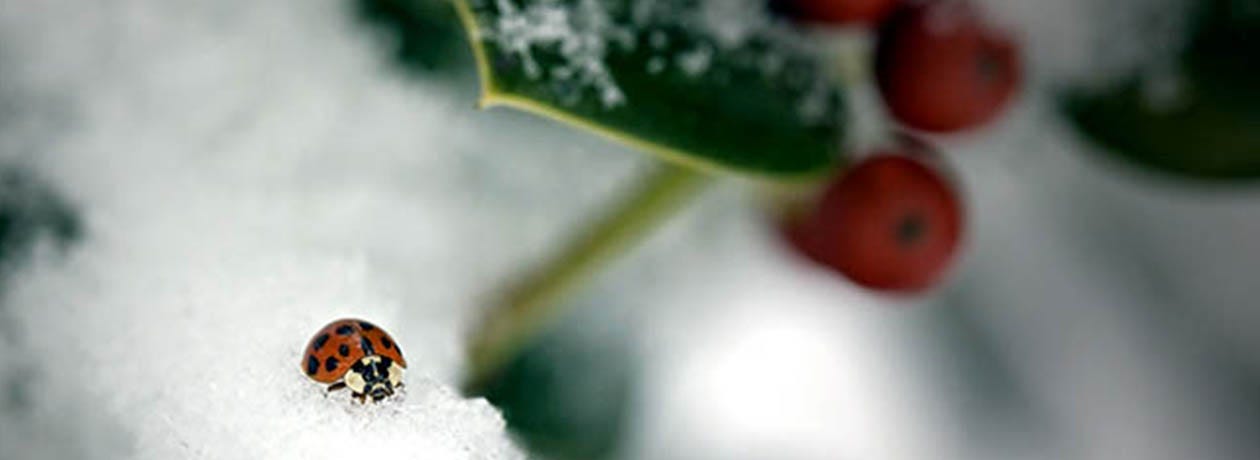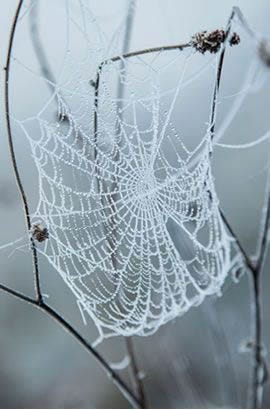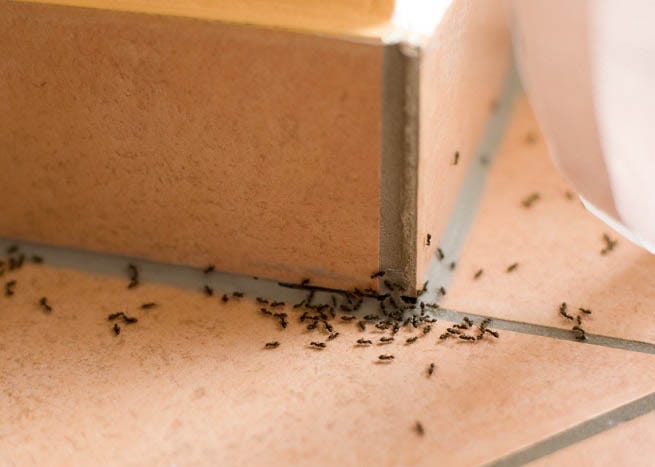Old Man Winter: How Weather Affects Pest Populations

Even though you may not see them during this time of year, most insects are still around. Some do migrate in winter, but others hibernate as adults. There are also insects where their nymphs, eggs and larvae stay cozy underground or beneath leaves and other debris. Some insects even spend the long winter months under water or hiding in your home.
What Happens to Bugs in the Winter
Insects are cold-blooded creatures, so the weather affects them differently than warm-blooded humans and animals. They must find a way to survive when the temperatures drop, so they can emerge again in spring. Insects do this in different ways.
Hibernation/Overwintering
Some insects hibernate during winter. They find a warm place to wait out the winter and either hibernate as adults or overwinter as larvae, nymphs, pupae or eggs. They spend the winter hidden away underground, in tree trunks or under fallen leaves.
Insects like bees and wasps find shelter from the cold in trees, under logs or in the eaves of homes and barns. They remain dormant in these areas until temperatures warm in the spring. Some pests, like spiders, are always around, but they hide out in cracks and crevices in the home and come out during mating season.
Built-In Anti-Freeze
Both freeze-tolerant and freeze-susceptible insects have a sort of built-in antifreeze that helps keep them alive in winter. Even with this chemical in their bodies, though, insects cannot continue any type of activity when temperatures drop below 40 degrees Fahrenheit.

Freeze-tolerant insects can survive freezing by using the anti-freeze chemical in their bodies to control where ice crystals form inside them. They can prevent ice crystals from forming in their organs or cells, while the surrounding fluid still freezes with no harm done. Once the weather warms, the ice crystals melt, and the insect returns to normal activity. This method is used for insects found in extremely cold regions where freezing and below freezing temperatures are a regular occurrence.
For insects that live in regions where winters are cool to mildly cool, they still have that same anti-freeze chemical in their bodies. However, they actually ‘supercool’ their internal body temperatures to a point below freezing. The insects remain dormant for the winter in this supercooled state, and then their bodies warm back up when spring and warmer temperatures arrive. If the temperatures drop below the insects’ supercooled point, though, they will freeze completely. Even the freeze-tolerant insects can no longer prevent ice crystals from forming in their cells when temperatures get too low.
Since insects are made up of mostly water, their size can determine how well they can supercool. Smaller insects contain less water, so they are able to supercool to a colder temperature than larger insects. Ants, mites and insect eggs can easily supercool to survive the winter.
How Weather Affects Insect Invasions
You may wonder, if insects hide away during cold weather, why do I have ants in the winter? Let’s look at how weather affects insects to answer that question. Insects are affected by temperature and moisture. Even though most insects do hide away during winter, if there are frequent temperature variations resulting in freezing and thawing, they can emerge early.

While ants do have nesting sites where they hide in winter, if the weather warms early, you can see them. Also, if the nest is located somewhere warm, like under heated concrete, they may emerge early. Even a warmer-than-normal sunny winter day may cause them to emerge sooner than usual. Ants may invade during any type of weather, but there are times when activity tends to increase.
Rainy Weather
During spring and summer, more rain means more ants. Lots of rain floods the ants’ nesting sites, so they go in search of dry ground -like your home. You may notice an army of ants in wet weather.
Dry Weather
A drought of a long duration of dry weather can also mean more ants entering the home. Dry weather can negatively affect the insects’ food supply, so they search for food and water inside the home. They may even build nests closer to the home for easier access to supplies.
You may not see as many ants outside during a drought as you would in wet weather, but you may notice them coming in your house more often since they are searching for food.
The Best Defence
Always be on the defensive when it comes to pests and bugs in winter. Ongoing pest maintenance after an invasion can cost you up to $250 per year. Keep your food in airtight containers and keep counters free of crumbs. TERRO® has many options to help you control ants and keep them out of your home - along with solutions for other pest problems, like stink bugs, spiders, termites, fruit flies, pantry moths, mosquitoes and more.
